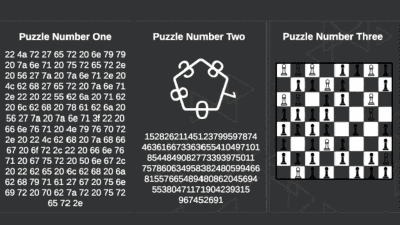10 historic ciphers that haven't been cracked yet

Speaking of famous
Nowadays, when the battle to break the code is fought on the Internet every day, you may think that 'the code of 100 years ago or 1000 years ago is instantly killed by a supercomputer', but it was made yesterday. It seems that a thousand-year-old cipher is much more difficult to decipher than a cipher.
Top 10 uncracked codes --Telegraph
http://www.telegraph.co.uk/news/newstopics/howaboutthat/8293375/Top-10-uncracked-codes.html
◆ Phaistos Disc

A 16 cm diameter clay disk with spiral hieroglyphs on both sides was discovered in
◆ Linear A

A clay tablet with the line letter A has been found in the palace where the aforementioned 'Phaistos Disc' was found, which was used on Crete from the 18th century BC to the 15th century BC.
◆ Kryptos

The work 'Kryptos' by American sculptor
◆ Chinese gold nugget code

Seven gold nuggets totaling 1.8 kg, allegedly issued to a person named 'General Wang' in Shanghai in 1933, contained pictures, Chinese characters, some cursive text, and Latin ciphertext. , Is believed to mimic the deposit certificate of an American bank. The part written in Chinese mentions some kind of '$ 300 million transaction'.
◆ Beale cipher

Three sets of ciphers, allegedly showing the location of gold and silver treasures buried in 1820 by a man named Thomas Jefferson Beale in
◆ Voynich Manuscript

A 232-page old document discovered by American old book dealer Wilfrid Voynich in a temple near Rome in 1912. The whole sentence is written in unknown characters that seem to be code, and the color illustrations depict recipes of unidentified plants and herbs and what seems to be, strange people who fit in things like astronomical charts and pipes. It seems that it is. It is believed to have been created around the 14th and 16th centuries.
◆

The encrypted letter written by British composer Edward Elgar to a woman named Dora Penny in 1897 is as short as 3 lines and 87 characters, but Dora could not decipher it to this day. It seems that neither Elgar researchers nor crypto enthusiasts around the world have been able to decipher it.
◆ Chaocipher

Invented by John F. Byrne in 1918, 'Chaocipher' seems to be a very difficult cryptosystem, as you can imagine from the names 'Chaos' and 'Cipher'. Despite Mr. Byrne's 40-year marketing, the US government did not show interest. Byrne prepared a prize for the decryptor, but no one said he was able to 'break it.'
◆ D'Agapeyeff cipher

At the end of the first edition of the rudimentary cipher book Codes and Ciphers, published in 1939 by Russian-born British cartographer Alexander D'Agapeyeff, the cipher is still a challenge to readers. Not solved. Mr. D'Agapeyeff later admitted that he 'forgot how to encrypt', and there seems to be a suspicion that it may be undecipherable due to a mistake in encryption or a mistake in copying. is.
◆

The body of an unidentified man found on the coast of Adelaide , Australia, on December 1, 1948. Despite the heat of summer, she wore a sweater and coat, and her identity could not be confirmed from her dental treatment records or fingerprints. A suitcase believed to belong to this man found at a nearby station found trousers with hidden pockets, which contained a page with the words 'Taman Shud' torn from the book. I did. This torn page matches a rare book of 'Le Bayert ' that was also found nearby in the backseat of an unlocked car, and the back cover of the book appears to have some code. The column was marked. The case remains unresolved to this day, the code is undeciphered, and it is known as one of the most mysterious cases in history in Australia.
Related Posts:
in Note, Posted by darkhorse_log







